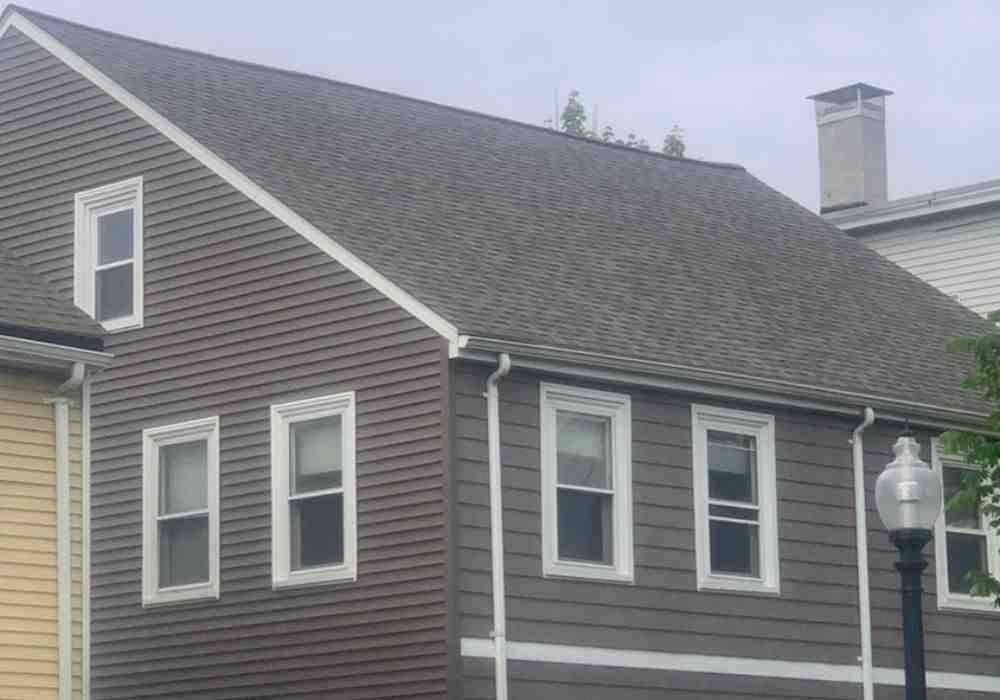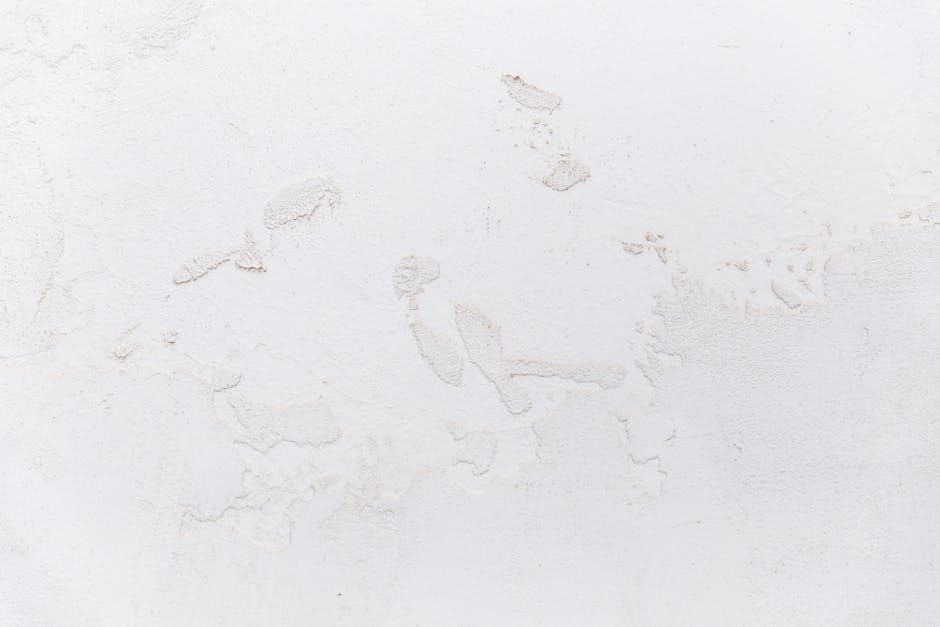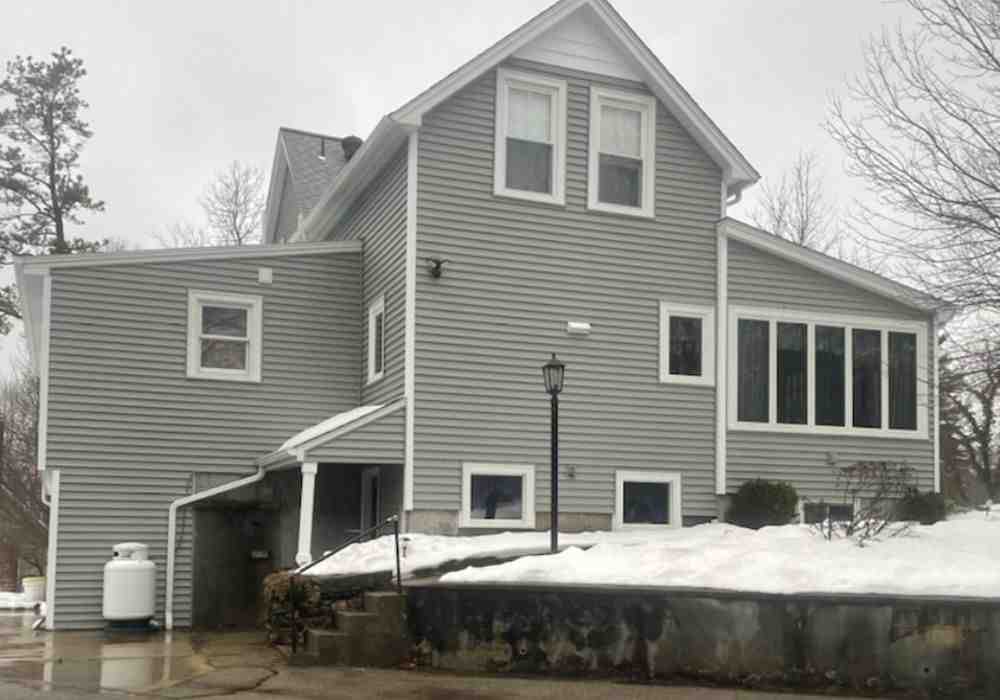Elevate Your Home’s Curb Appeal with Siding Replacement
If you’re considering a siding replacement for your home, you’ve come to the right place. Whether you’re aiming for a fresh look or need to address structural concerns, replacing your siding offers numerous benefits. Here’s a quick rundown of why you might need siding replacement and what it can do for your home:
- Improved Home Protection: New siding acts as a robust barrier against the elements.
- Enhanced Curb Appeal: Fresh siding dramatically updates your home’s look, making it appear brand new.
- Increased Energy Efficiency: Modern siding materials offer improved insulation, reducing energy bills.
- Prevention of Structural Damage: Replacing old or damaged siding prevents moisture and pests from compromising your home’s structure.
I’m Kevin McLaughlin, owner of Heritage Exteriors LLC. With years of experience in the home improvement industry, particularly in siding replacement, my team and I are committed to transforming your home with high-quality workmanship and personalized service.

Ready to dive deeper? Let’s start by understanding why replacing your siding is a smart move for your home.
Why Replace Your Siding?
Replacing your siding is a big decision, but it’s an investment that pays off in many ways. Let’s break down the main reasons why siding replacement is a smart move for your home.
Home Protection
Your siding acts as a shield, protecting your home from the elements. Over time, weather, pests, and wear and tear can damage your siding. When this happens, your home’s structure is at risk. Damaged siding can lead to:
- Moisture Intrusion: Water can seep into your walls, causing mold and rot.
- Pest Infestation: Insects like termites and carpenter ants can enter through cracks and holes.
Regularly inspecting and replacing damaged siding helps maintain the integrity of your home’s structure.
Curb Appeal
First impressions matter. If your siding looks old or damaged, it can make your home look neglected. Replacing your siding can:
- Refresh Your Home’s Appearance: New siding gives your home a clean, updated look.
- Increase Market Value: According to Forbes, new siding can boost your home’s value and appeal to potential buyers.
Energy Efficiency
Old or damaged siding can let in drafts, making your home less energy-efficient. Replacing your siding can:
- Improve Insulation: Modern siding options provide better insulation, keeping your home warmer in winter and cooler in summer.
- Lower Energy Bills: Better insulation means your HVAC system works less, saving you money on energy bills.
Structural Integrity
Siding isn’t just for looks; it plays a crucial role in your home’s structural integrity. Damaged siding can compromise your home’s structure, leading to:
- Rotting Wood: This weakens your home’s frame and can lead to costly repairs.
- Warpage: Warped siding can affect the seal and insulation, making your home less energy-efficient and more vulnerable to the elements.
In summary, replacing your siding protects your home, boosts its curb appeal, improves energy efficiency, and maintains its structural integrity.
Next, let’s explore the different types of siding materials available for your home.
Types of Siding Materials
When it comes to siding replacement, choosing the right material is crucial. Each type of siding has its own benefits and drawbacks. Here’s a look at the most popular options:
Vinyl Siding
Vinyl siding is a top choice for many homeowners due to its low cost and easy maintenance. It’s available in a wide variety of colors and styles, making it versatile for different home designs.
- Installation Tips: Vinyl is relatively easy to install, but proper technique is essential to avoid warping and ensure it holds up over time. It’s best to hire a professional to ensure correct installation.
Wood Siding
Wood siding offers a classic aesthetic appeal that many homeowners love. Available in various types of wood like cedar, pine, and redwood, it brings a natural look to your home.
- Maintenance Requirements: Wood requires regular maintenance, including painting or staining every few years to prevent rot and insect damage.
- Lifespan: With proper care, wood siding can last up to 30 years.
Fiber Cement Siding
Fiber cement siding combines durability with a look that mimics wood or stucco. It’s fire-resistant and termite-resistant, making it a durable choice.
- Cost: The average cost is $6 to $12 per square foot installed. While it’s more expensive than vinyl, its longevity (25 to 50 years) can make it a worthwhile investment.
Brick Siding
Brick offers a classic look that never goes out of style. It’s highly durable and can last the lifetime of your home with minimal maintenance.
- Installation Process: Installing brick siding involves laying bricks and mortar, which requires skilled labor.
- Cost: Brick siding is more expensive, but its durability and low maintenance can offset the initial investment.
Stone Veneer Siding
Stone veneer siding provides the natural beauty of stone at a fraction of the cost. It’s available in both natural and synthetic materials.
- Cost: The average cost ranges from $10 to $30 per square foot installed.
- Maintenance: Regular cleaning and inspection can help ensure it lasts the lifetime of the house.
Stucco Siding
Stucco siding offers a traditional look commonly found on Mediterranean and Spanish-mission homes. Made from sand, cement, lime, and water, it’s applied over a metal screening and a waterproof barrier.
- Installation Process: Proper installation is key to reducing the risk of cracks.
- Maintenance: With the right care, stucco can last the lifetime of the house.
Each of these siding materials has its own set of benefits and considerations. In the next section, we’ll help you understand how to choose the best siding for your home.
How to Choose the Best Siding for Your Home
Choosing the right siding replacement material for your home involves several key factors. Let’s break them down:
Durability
Durability is crucial. You want siding that can withstand the elements and last for years.
- Vinyl Siding: Generally lasts over 20 years but can become brittle with excessive UV exposure.
- Wood Siding: Can last from 10 to 100 years depending on maintenance.
- Fiber Cement Siding: Offers high durability against fire, termites, and rot.
- Brick Siding: Can last the lifetime of the house if installed correctly.
- Stone Veneer Siding: Also highly durable but requires proper installation to prevent cracking.
- Stucco Siding: Can last a lifetime with proper care.
Cost
Budget is always a consideration. Here’s a quick comparison:
- Vinyl Siding: Most cost-effective, averaging $3 to $7 per square foot.
- Wood Siding: Costs $5 to $10 per square foot, plus maintenance costs.
- Fiber Cement Siding: More expensive, around $6 to $12 per square foot.
- Brick Siding: Higher end, costing $6 to $15 or more per square foot.
- Stone Veneer Siding: Also on the higher end, but can vary widely.
- Stucco Siding: Mid-range, but installation can be labor-intensive.
Maintenance
Consider how much time and effort you’re willing to put into upkeep.
- Vinyl Siding: Low maintenance, just occasional cleaning.
- Wood Siding: High maintenance, needs regular painting or staining.
- Fiber Cement Siding: Low maintenance, resistant to many issues.
- Brick Siding: Minimal maintenance, but check for mortar issues.
- Stone Veneer Siding: Low maintenance but inspect for cracks.
- Stucco Siding: Requires periodic inspection for cracks and sealing.
Aesthetic Appeal
Your home’s look is important. Different materials offer different styles.
- Vinyl Siding: Available in many colors and styles.
- Wood Siding: Offers a classic, rich look.
- Fiber Cement Siding: Can mimic wood, stone, or brick.
- Brick Siding: Provides a timeless, classic appearance.
- Stone Veneer Siding: Adds natural beauty and texture.
- Stucco Siding: Offers a traditional, smooth finish.
Climate Considerations
Your local climate can impact the performance of your siding.
- Vinyl Siding: Good for moderate climates but can warp in extreme heat.
- Wood Siding: Not ideal for humid or termite-prone areas.
- Fiber Cement Siding: Great for a variety of climates, including fire-prone areas.
- Brick Siding: Performs well in most climates but needs a moisture barrier in wet areas.
- Stone Veneer Siding: Durable in most climates but requires proper installation.
- Stucco Siding: Best for dry climates, can crack in areas with extreme temperature changes.
Choosing the right siding involves balancing these factors to meet your needs and preferences. In the next section, we’ll explore the costs involved in a siding replacement project.
Siding Replacement Costs
When planning a siding replacement project, understanding the costs involved is crucial. Let’s break down the main factors that will affect your budget: cost per square foot, labor costs, additional costs, and cost by material.
Cost Per Square Foot
The cost to install new siding varies widely based on the material. On average, expect to pay around $10 per square foot. However, this can range from as low as $5 per square foot for vinyl to as high as $45 per square foot for natural stone.
Here’s a quick overview:
- Vinyl Siding: $5 to $11 per square foot
- Wood Siding: $4 to $15 per square foot
- Fiber Cement Siding: $5 to $10 per square foot
- Stucco Siding: $8 to $13 per square foot
- Brick Siding: $8 to $21 per square foot
- Stone Veneer Siding: $12 to $22 per square foot
Labor Costs
Labor costs depend on the complexity of the job and the material used. Here are some average labor costs per square foot:
- Vinyl Siding: $2 to $5 per square foot
- Fiber Cement Siding: $4 to $10 per square foot
- Wood Siding: $1 to $2.50 per square foot
- Aluminum Siding: $1.50 to $3 per square foot
Factors like project complexity and crew size can also affect labor costs. More complex projects or larger crews will increase the overall cost.
Additional Costs
When replacing siding, don’t forget about additional costs that can add up:
- Permits: Required for most projects, costing a few hundred dollars.
- Debris Removal: Contractors usually handle this, but confirm to avoid surprises.
- Taxes: Applicable taxes will also add to your final bill.
Cost by Material
The type of siding material you choose significantly impacts the total cost. Here are some examples:
- Vinyl Siding: Costs between $9,000 and $14,000 for a 2,000 square foot house.
- Wood Siding: More expensive, ranging from $16,000 to $26,000.
- Brick or Stone: The most costly, from $18,000 to $100,000.
Quality and durability also play a role. For example, fiber cement siding lasts around 50 years, while brick and stone veneer can last at least 100 years.
Understanding these costs will help you budget effectively for your siding replacement project. In the next section, we’ll discuss the signs that indicate it’s time for a siding replacement.
Signs It’s Time for a Siding Replacement
Knowing when to replace your siding can save you from costly repairs and protect your home. Here are the key signs that it’s time for a siding replacement:
Visible Damage
Cracks, Warping, and Bubbling: If you see cracks, warping, or bubbling on your siding, it’s a clear sign that moisture has infiltrated. This can lead to severe damage to your home’s structure.
Discoloration and Fading: With vinyl siding, discoloration and fading can indicate UV damage. Faded vinyl is brittle and prone to cracking.
Frequent Repairs
If you’re constantly fixing small issues, it’s time to consider a full siding replacement. Frequent repairs can add up and may not address underlying problems.
Example: One homeowner faced repeated pest infestations due to deteriorating wood siding. Only after replacing it with fiber cement siding did the pest issues stop.
High Energy Bills
Increased Heating and Cooling Costs: If your energy bills are higher than usual, your siding might have lost its insulating properties. Drafts and hot spots in your home are also indicators.
Fact: Properly installed, insulated siding can reduce energy bills by up to 20%.
Mold and Moisture Issues
Mold and Moss Growth: Not just an eyesore, mold, and moss indicate moisture retention. This can lead to structural damage if not addressed promptly.
Bubbling and Warping: These signs mean moisture is trapped underneath the siding, compromising the barrier.
Pest Damage
Insects and Small Animals: Termites, woodpeckers, and squirrels can cause significant damage, especially to wood siding. Look for holes, gnaw marks, and other signs of wildlife intrusion.
Case Study: A homeowner in Easley, SC, found extensive termite damage in their wood siding. They opted for fiber cement siding, which is resistant to termites and other pests.
By recognizing these signs early, you can avoid more severe damage and maintain your home’s structural integrity. In the next section, we’ll walk you through the siding replacement process, from initial inspection to final touches.
The Siding Replacement Process
Replacing your siding is a big project, but breaking it down into steps makes it manageable. Here’s what to expect from start to finish.
Initial Inspection
The first step is a thorough inspection. A professional will examine your home’s exterior to assess the condition of your current siding. They’ll look for cracks, gaps, holes, and signs of moisture or pest damage. Fact: According to Heritage Exteriors LLC, missing or sagging siding can also indicate it’s time for replacement.
Choosing Materials
Next, you’ll choose your new siding material. This decision depends on various factors such as durability, cost, maintenance, and aesthetic appeal. Common options include:
- Vinyl siding: Low cost and easy maintenance.
- Wood siding: Attractive but requires regular upkeep.
- Fiber cement siding: Durable and resistant to fire and pests.
- Brick siding: Classic look with a long lifespan.
- Stone veneer siding: Natural beauty with less weight.
- Stucco siding: Traditional look and good insulation properties.
Obtaining Permits
Before installation begins, you’ll need to obtain the necessary permits. This step ensures that your project complies with local building codes and regulations. It’s essential to check with your local authorities or your contractor to know what’s required.
Installation Steps
- Preparation: Remove old siding and inspect for any underlying damage. This is crucial to prevent future issues.
- Moisture Barrier: Install a moisture or vapor barrier to protect against water infiltration. This step is vital in climates prone to moisture and mold.
- Siding Installation: Begin attaching the new siding panels. For vinyl siding, leave a small gap for expansion and contraction due to temperature changes.
- Trimming and Finishing: Add trim around windows, doors, and corners. This not only improves the look but also seals gaps to prevent moisture intrusion.
- Cleanup: Proper disposal of old siding and debris ensures your home looks neat and tidy.
Final Inspection
Once the installation is complete, a final inspection is done. This step ensures everything is installed correctly and meets quality standards. A Field Quality Manager may oversee this process to answer any questions and ensure your satisfaction.
Having a clear understanding of the siding replacement process helps you make informed decisions and ensures a smooth project. Next, we’ll address some frequently asked questions about siding replacement to further guide you.
Frequently Asked Questions about Siding Replacement
How much does it cost to replace one piece of siding?
Replacing one piece of siding can be quite affordable, especially if you choose vinyl siding. The cost typically ranges from $2 to $5 per square foot for materials and labor. For instance, if you need to replace a damaged section that’s 10 square feet, you might spend between $20 and $50.
However, costs can vary based on the type of siding. Wood siding is more expensive, ranging from $1 to $2.50 per square foot for labor alone. If the damage is extensive, involving multiple pieces or hard-to-reach areas, costs can escalate quickly.
How much does 1,000 square feet of siding cost?
The cost to replace 1,000 square feet of siding depends on the material you choose:
- Vinyl Siding: $9,000 to $14,000
- Wood Siding: $16,000 to $26,000
- Fiber Cement Siding: $4 to $10 per square foot for labor
- Brick or Stone: $18,000 to $100,000
Factors affecting the cost include the complexity of the installation, the condition of the underlying structure, and local labor rates. Don’t forget additional expenses like permits and debris removal, which can add a few hundred dollars to your total.
Is it worth replacing siding on a house?
Absolutely. Replacing your siding offers several benefits:
- Investment Value: According to the 2023 Remodeling Cost vs. Value report, replacing siding can add up to $17,000 to your home’s resale value, representing an 89% return on investment.
- Protection Benefits: New siding protects your home from the elements, reducing the risk of water damage, mold, and pest infestations.
- Aesthetic Improvements: Fresh siding enhances curb appeal, making your home more attractive to potential buyers.
In summary, siding replacement is a smart investment that boosts your home’s value, protects it from damage, and improves its appearance.
Conclusion
At Heritage Exteriors LLC, we understand that replacing your siding is a significant investment. It’s not just about making your home look better; it’s about protecting your biggest asset from the elements and increasing its value.
Why Choose Heritage Exteriors LLC?
Our team is dedicated to providing top-quality siding replacement services that meet your needs and exceed your expectations. We specialize in a variety of siding materials, including vinyl, wood, fiber cement, brick, stone veneer, and stucco. Each material has its unique benefits, and we help you choose the best option for your home.
Benefits of Siding Replacement
1. Enhanced Home Protection: New siding acts as a robust shield against weather, pests, and other environmental factors. This reduces the risk of water damage, mold, and infestations, ensuring your home remains safe and sound.
2. Increased Curb Appeal: Fresh siding can dramatically improve your home’s exterior appearance. This not only makes your home more attractive to potential buyers but also boosts your pride in ownership.
3. Improved Energy Efficiency: Modern siding materials offer better insulation, which can help lower your energy bills. This is especially important in extreme climates where heating and cooling costs can be significant.
4. Long-Term Savings: While the initial cost of siding replacement can be high, the long-term savings on maintenance and energy bills make it a worthwhile investment. Plus, the increase in your home’s value provides a solid return on investment.
Final Thoughts
When it comes to siding replacement, choosing the right contractor is crucial. At Heritage Exteriors LLC, we pride ourselves on our expertise, quality workmanship, and customer satisfaction. Our goal is to make your home not only beautiful but also durable and energy-efficient.
Ready to transform your home’s exterior? Schedule a free consultation with one of our siding experts today. Let’s discuss your options and find the perfect siding solution for your home.







